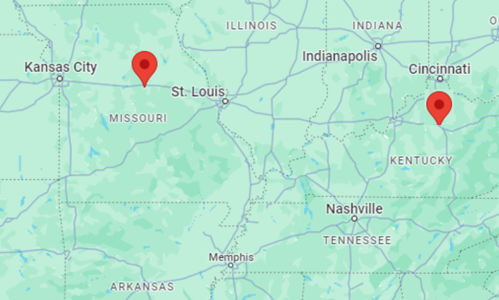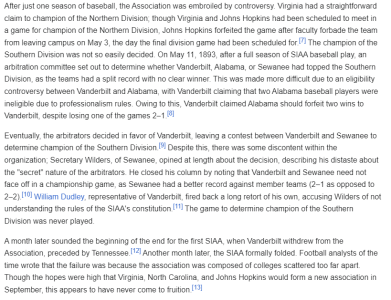Was curious how NC was left out of SEC, and searched...interesting that I think the size of SEC is getting to the point where history could be repeated in some form in the future...
Dr. William Dudley, a chemistry professor at Vanderbilt, answered the call for an affiliation of southern schools. Representatives from seven schools—Alabama, Auburn, Georgia, Georgia Tech, North Carolina, Sewanee, and Vanderbilt—met Dudley on December 22, 1894 at the Kimball House in Atlanta to form the Southern Intercollegiate Athletic Association (SIAA), the grandfather of the SEC. The SIAA was formed, according to Dr. Dudley, to provide faculty regulation and control of all college athletics. A year later, 12 more schools were added, including Clemson, Kentucky, LSU, Mississippi, Mississippi State, Tennessee, Texas, and Tulane.
The SIAA held together through the 1920 season. At the annual conference on December 10, 1920, a disagreement among the schools took place. The smaller SIAA schools, through their collective vote, passed a rule allowing freshmen players to compete immediately with the varsity and voted down a proposition to abolish a rule that allowed athletes to play summer baseball for money. Additionally, the SIAA had reached 30 members making it very difficult for the schools to play one another and crown a true champion. Led by University of Georgia English professor Dr. S.V. Sanford, 18 schools left to form the Southern Intercollegiate Conference (Southern Conference) on February 25, 1921 in Atlanta. At that point, the SIAA became a conference for small colleges and eventually disbanded in 1942.
The Southern Conference grew to 23 schools by 1932. Again, the league was too big. Dr. Sanford convinced the 13 schools west and south of the Appalachian Mountains—Alabama, Auburn, Florida, Georgia, Georgia Tech, Kentucky, LSU, Mississippi, Mississippi State, Sewanee, Tennessee, Tulane, Vanderbilt–to reorganize as the Southeastern Conference. Play began in 1933. By December 1953, eight other schools—Clemson, Duke, Maryland, North Carolina, North Carolina State, South Carolina, Virginia, Wake Forest—had left the Southern Conference to form the Atlantic Coast Conference. The Southern Conference survives to this day.






